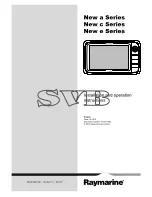
Standard practices for grounding
36
Appendix A. Standard practices for
grounding
This information is provided for added safety and should be used in
conjunction with Step 6. Ground the QGFSP.
The following standard practices are provided as good manufacturing
processes for grounding. It is strongly recommended that you follow
these practices for the RAU primary ground connection.
Ground rods
Ground rods shall be not less than 12.7 mm (1/2 inch) in diameter
and at least 2.4 meters (8 feet) long. Rods shall be copper-clad steel,
solid copper, hot-dipped galvanized steel, or stainless steel. Rods
shall be free of paint or other nonconducting coatings. Note that some
types of soil may require a longer ground rod.
Note
Research has been presented warning that stainless steel is
very susceptible to corrosion in many soil conditions. Use
extreme caution and conduct a proper soil analysis when this
type of rod is used.
Separate RAU ground equipment
Electrical system and telecommunication grounding electrodes shall
not be used in lieu of lightning ground rods. This shall not prohibit
the required bonding together of grounding electrodes of different
systems.
Note
IN NORTH AMERICA for further information see NFPA 70,
National Electrical Code® and NFPA 780, Standard for
Installation of Lightning Protection Systems, 1995 Edition©,
which contain detailed information on the grounding of
electrical systems.
IN OTHER COUNTRIES refer to the local lightning and
electrical codes.
Ground rod terminations
The down conductor shall be attached to the ground rod by bolting,
brazing, welding, or using high-compression connectors listed for the
purpose. Clamps shall be suitable for direct soil burial.
•
Deep moist clay soil
The lightning conductors or ground rods shall extend vertically
not less than 3 meters (10 feet) into the earth. The earth shall be
compacted and made tight against the length of the conductor or
ground rod.
•
Sandy or gravelly soil
In sand or gravel, two or more ground rods, at not less than 3
meters (10 feet) spacings, shall be driven vertically to a minimum
depth of 3 meters (10 feet) below grade.
•
Shallow topsoil
Where bedrock is near the surface, the conductor shall be laid in
trenches extending away from the building at each down
conductor. These trenches shall be not less than 3.7 meters
(12 feet) in length and from 0.3 to 0.6 meter (1 to 2 feet) in depth
in clay soil. In sandy or gravelly soil, the trench shall be not less
than 7.5 meters (24 feet) in length and 0.6 meter (3 feet) in depth.
If these methods should prove impractical, an acceptable
alternative would be to carry the lightning protection cable (or
grounding cable) in trenches of a depth specified above. If this is
impossible, carry the lightning protection cable directly on
bedrock, a minimum distance of 0.6 meter (2 feet) from the
Содержание GSP-2800
Страница 1: ......









































